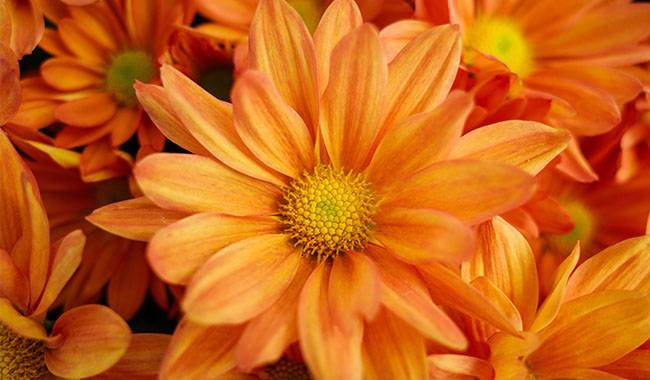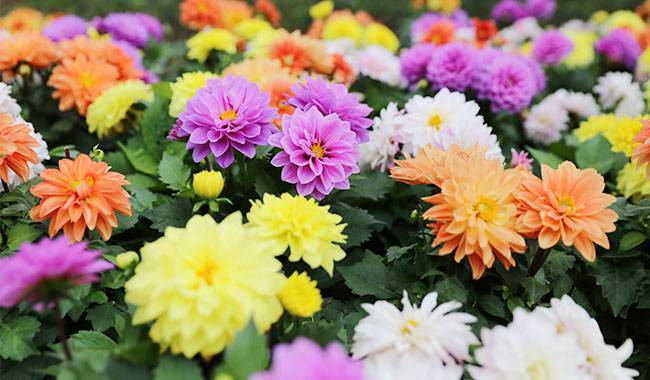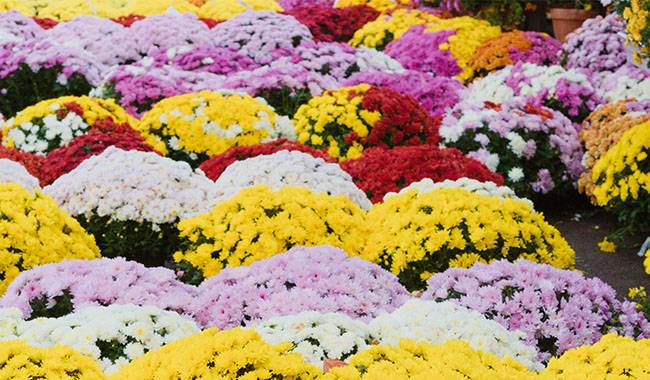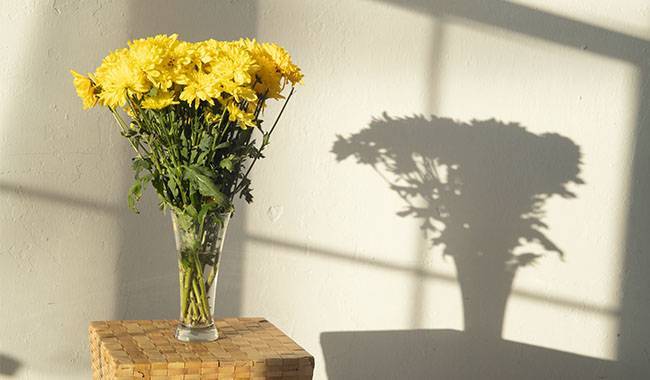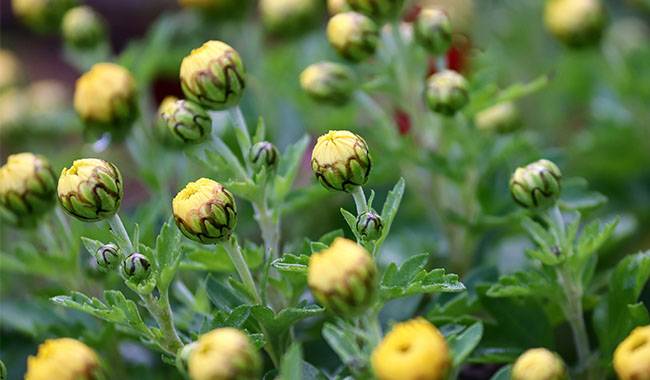
Chrysanthemums are amazing flowers. When the trees are empty and the air smells like winter, they stand out in a dreary autumn scene. These flowers last a long time in cut flowers, so they are used to make fall bouquets.
For some reason, it is thought that chrysanthemums can only be propagated by dividing shrubs or rooting shoots, but in our article, we will show you the miracle of growing chrysanthemums from seed.
VARIETIES OF CHRYSANTHEMUM
There are many varieties of chrysanthemums, and botanists have counted about 700 species. They differ in inflorescence size, color, the height of the shrub, and the time of flowering. Garden chrysanthemums are divided into 13 groups according to their inflorescence types.
Chrysanthemums are divided into several groups according to the following characteristics
- Plants with swollen flower inflorescences and petals covering the middle belong to pinnate chrysanthemums.
- Chrysanthemums similar to the first type, but with more delicate petals resembling bristles, called bristle-like.
- An open flower center with 1 or 2 rows of petals on both sides and a flat, daisy-like inflorescence indicates that it belongs to the monocot or semi-shrub chrysanthemum category.
- Similar to the above, the spoon-shaped petals belong to the spoon-shaped daisy group.
- The flowers in the inflorescence are small and round, small and straight, which are the characteristics of downy daisy.
- The inflorescence is flat, bulging in the middle, and fluffy – these impurities belong to an anemic chrysanthemum.
- A new type, similar to plumose chrysanthemum, with longer petals, is called chrysanthemum fantasy.
HOW TO GET CHRYSANTHEMUM SEEDS
Chrysanthemum seeds are commercially available, but you can also harvest them yourself. In doing so, you should know.
- Small single-flowered and semi-axillary-flowered seeds are easier to collect and they germinate well, but large-flowered varieties are difficult to propagate in this way because they produce very few seeds.
- Early and medium flowering chrysanthemums produce good quality seeds. The seeds of late-flowering chrysanthemums are not of high quality.
So, to get seeds of your favorite plants.
- Plant it as early as possible in spring.
- Water it regularly and fertilize it.
- we get rid of it.
- Make sure that small chrysanthemums have 5 to 8 stems, and large ones – no more than 3.
- When pruning, leave only 1 bud per stem. This will improve seed quality and increase the number of seeds.
Collect seeds from plants that bloom in mid-summer, while they are still in the garden.
For those that continue to bloom in the fall, you should do the following.
- Cover the bush with aluminum foil so that the flowers do not get wet in case there is no possibility of moving them to the greenhouse.
- Before the frost, transplant the chrysanthemums into pots and bring them indoors and place them on a sunny windowsill. If the bush is kept in a greenhouse, condensation can damage the buds. To prevent this, protect them with gauze or agricultural film.
- Harvest the seeds as soon as the baskets turn brown. This usually happens in late November/early December. Do not be too late or they will fall off on their own.
Important: If the petals of your chrysanthemums are so long that they cover the middle, they will need to be trimmed as they grow. This will give the seedbed more light and ventilation and prevent seedbed rot.
GROWING CHRYSANTHEMUMS FROM SEED
Chrysanthemums can be grown from seed in two ways.
- By sowing the seeds directly into the ground.
- By planting seedlings.
NON-GERMINATION METHOD
This method is the most economical and least labor-intensive but has 1 disadvantage – the fruits of his labor you can only enjoy at the end of summer before the chrysanthemums do not bloom.
If you are willing to wait so long, prepare raised beds in May and do the following steps.
- Make a hole every 25cm (9.8inch) or so.
- Irrigate with warm water.
- Put one seedling in each planting place – no more than 3.
- Cover the top with soil.
- Cover with agricultural film or mulch in case it is still relatively cold. Remove the cover as soon as the first sprout appears.
- Take good care of the seedlings. Loosen and remove any weeds.
- Apply fertilizer in the form of a highly diluted liquid fertilizer.
- After 3 leaves appear, remove the excess plants, leaving only the strongest plants in the nest at a time. Discard the rest.
PLANTING SEEDLINGS
For seed-grown chrysanthemums to bloom at the right time, planting should start in March at the latest, for this purpose.
- we prepare trays with a side height of 6-8 cm (2.3-3.1inch).
- we fill them with soil.
- laying the seeds.
- sprinkle clean river sand on top. The thickness of the layer does not exceed 1 cm (0.39inch).
- water to moisten.
- cover with glass or tighten with foil.
- We leave the seeds to germinate at an average temperature of 64.4°F (18°C). Seeds will germinate in approximately 2 weeks.
- removing the glass and placing the tray on the windowsill.
- watering and fertilizing and increasing sunlight.
- sitting in different containers as soon as we see 3-4 real leaves.
- we transplant them on the beds in May, keeping the distance between plants 15-20cm (5.9-7.8inch) and 30cm (11.8inch) between rows.
HOW TO PREPARE THE SOIL FOR PLANTING CHRYSANTHEMUMS WITH SEEDS
The composition of the soil in which the seeds are sown is important. It consists of equal parts.
- white peat.
- humus.
- greenhouse soil through a sieve.
After mixing all these components, the soil should be sterilized. For this purpose, it is placed on a stove or in a water bath heated to 266 °F (130 °C).
CARE FOR GROWING CHRYSANTHEMUM SEEDS
After deciding to propagate chrysanthemums from seed, you should pay special attention to planting and caring for them for the first year.
WHAT CHRYSANTHEMUMS LIKE
If you set yourself the task of growing chrysanthemums from seeds, you should know under what conditions to obtain flowers that are not inferior to exhibition specimens. Keep in mind that this plant likes.
- exposure to the sun and shelter from the wind.
- fertile soil; best is easily permeable loamy soil. Acidity рН from 6-6.5.
- good drainage system.
CHARACTERISTICS OF JUVENILE PLANTS
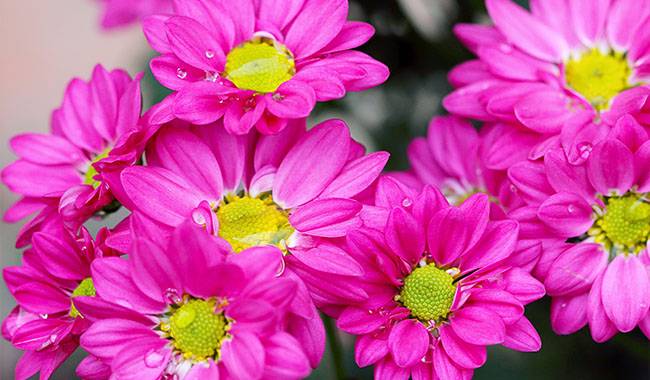
In the first year after planting chrysanthemum with seeds, young plants are somewhat different from older plants of the same species.
- flowering starts after a week or two.
- There are few cuttings.
- The flowers are larger.
Note: Planting it as a single stem will give you strong chrysanthemum seeds.
SEEDLING CARE
For good results, please follow the rules for caring for newly planted chrysanthemum seedlings.
- A seedling should be covered with at least 25x25cm (9.8×9.8inch) area.
- Fertilize at least 3 times in summer. Mineral and organic fertilizers are used alternately. Nitrogen fertilizer is especially important, including organic and mineral fertilizers.
Standard fertilizer application for 1 square meter.
Nitrogen: 10 to 15 grams.
Potassium: 10 to 16 grams.
Phosphorus: 15 to 20 grams.
HOW TO PROTECT AGAINST DISEASES
Unfortunately, sometimes plants can be diseased and destroyed by various pests. Therefore, in order to turn chrysanthemum seeds into beautiful flowers, it is necessary to prevent and fight against these attacks.
- When fertilizing, add phytophthora and other drugs to the solution.
- After the rain, treat shrubs with fungicidal preparations to prevent fungal and viral infections.
- For caterpillars, leaf miners, and other pests, apply insecticidal preparations.
- Use insecticides if aphids attack or spider mites appear, but when you don’t like to use chemicals in the garden, then there is still this recipe: Dissolve laundry soap in water and sprinkle it on the plants.




